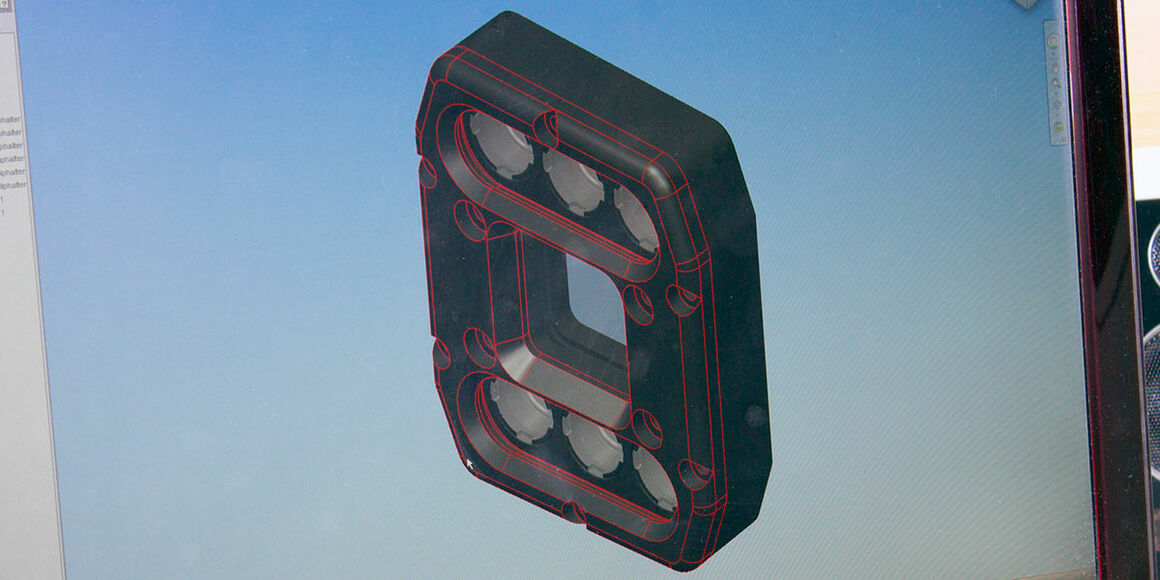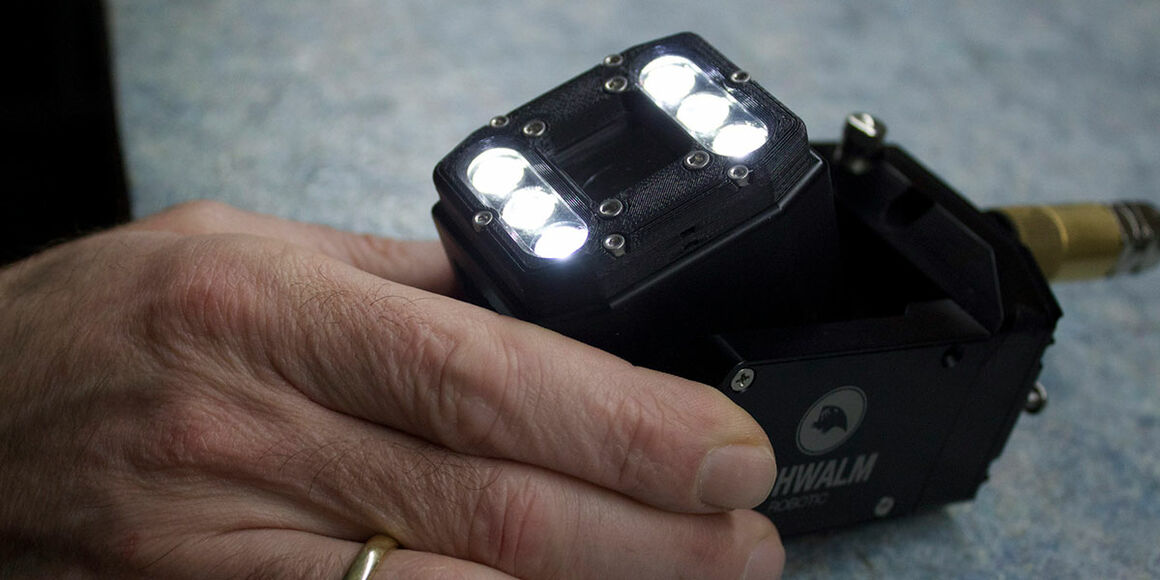Propellers, prostheses, pizza: In the future, or so they say, 3D printers will be able to produce almost anything and will therefore revolutionise the industry. There are experts who warn of unrealistic expectations, while others are currently making thoroughly interesting use of this technology. Martin Schwalm is one of the latter. He has owned a 3D printer for several months.
It smells of almond pastries, hot milk and a charred plastic cup. This smell is produced by a small hot glue applicator, which moves frantically to and fro inside a black box, spraying melted plastic on a platform. Layer by layer, a black, shimmering camera cover appears. This is part of a construction which Martin Schwalm drafted as a 3D design on a computer. Software converts the design into print commands. A "three-dimensional hot glue applicator" builds the desired object out of plastic in layers.

"This process perhaps sounds tedious," says Martin Schwalm. "And it certainly takes its time. Depending on the complexity of the design, a 3D print job can take hours, or even days. However, especially in the beginning of a development this is the quickest method to make an idea tangible. For example, if a designer designs a computer casing or a ballpoint pen, these objects are manufactured in mass production mostly in just a few seconds by spraying soft plastic into a mould. Except for one thing: manufacturing shapes and then adjusting machines to suit them is a very tedious process. For prototypes, this is not worth the effort. It requires manual labour first and foremost. And since prototypes can be made much more quickly using 3D printers today, this technology is of increasing interest to us as engineers and handymen, for example.

However, in my opinion, it is still doubtful whether this process will also play a role in mass production and thereby set off the next industrial revolution. But for me personally, and also for Schwalm Robotic, the advantages are already clear. We have much more freedom in designing a prototype than with the original production techniques, as the more complicated an object is, the more effort it takes to manufacture. Either the blank must be drilled or cut, or the mould becomes increasingly expensive. The costs increase. A 3D printer offers us interesting potential for savings, as the printer only requires the material which is absolutely necessary and ideally makes welds and screws unnecessary.

At the end of the day, I now see 3D printing as an additional technology, not a revolution. The sense of euphoria reminds me of 20 years ago. Back then, lasers were all the rage. Today, they have their place, but drilling and cutting has continued. Furthermore, the devices are currently only able to process selected materials and are usually restricted to just one. However, the first machines are beginning to appear which can use several plastics at the same time, like a colour inkjet printer. However, there are still no machines which can process metal and plastic at the same time, as the processes are too different. So it's still exciting to see where this technology will go in future."